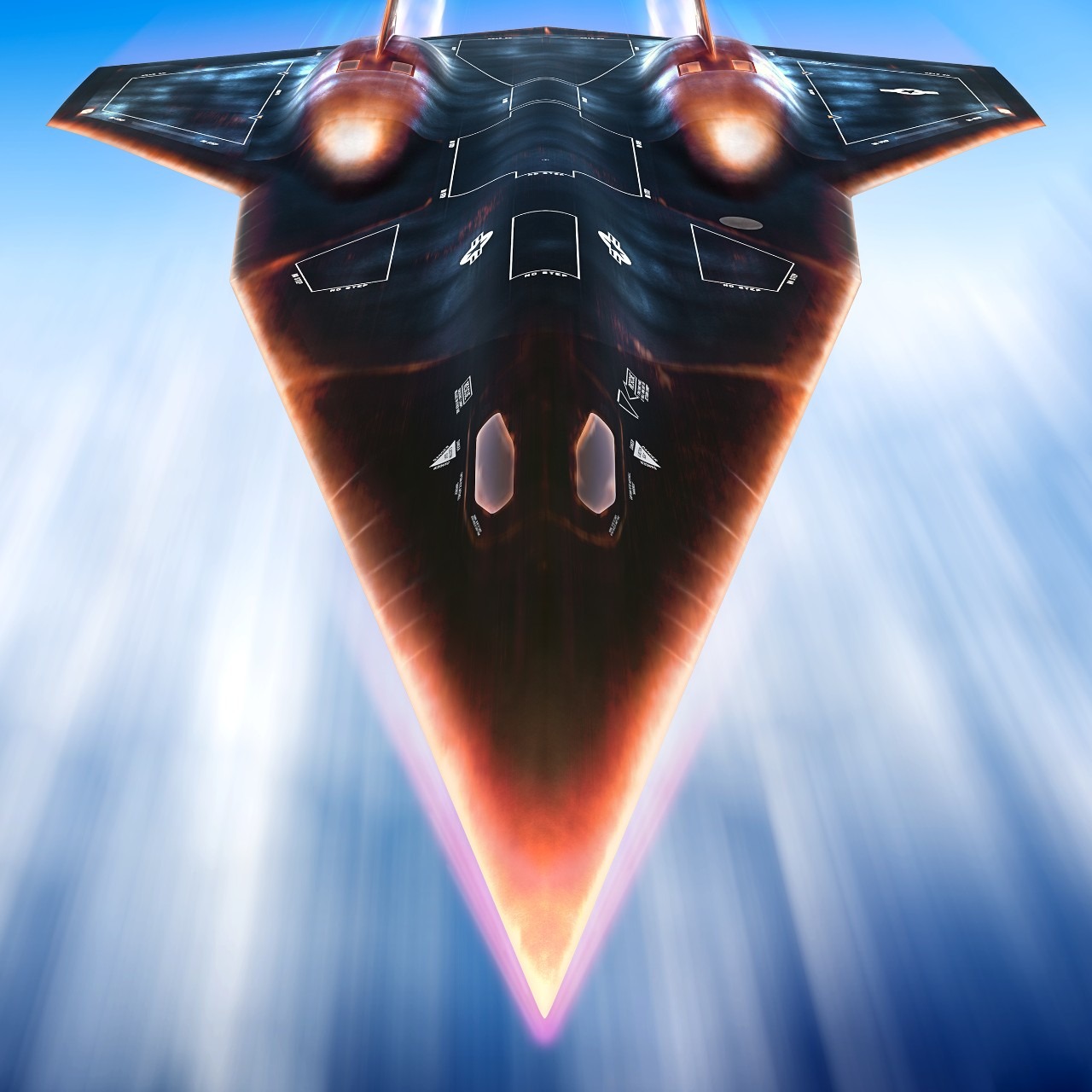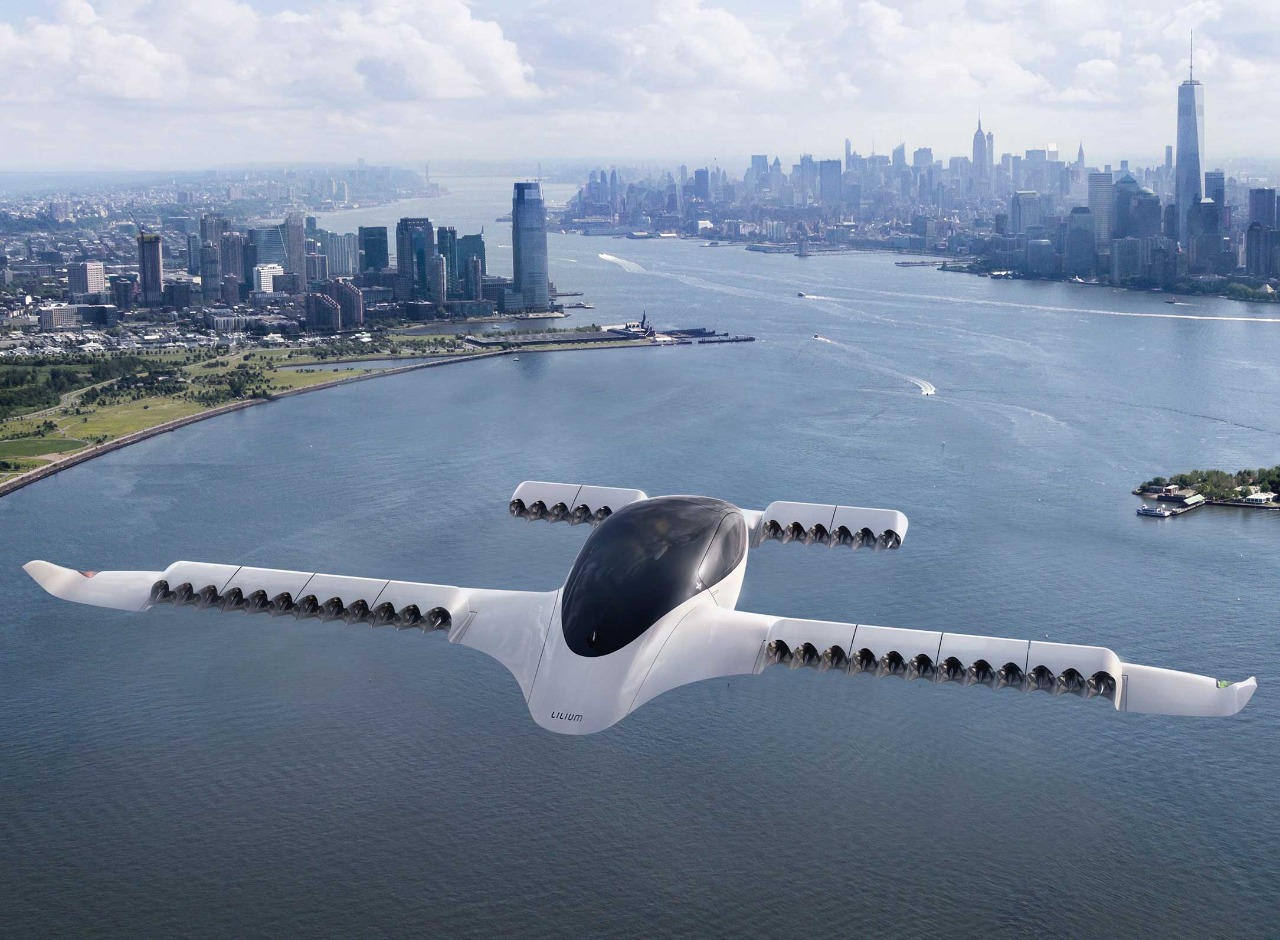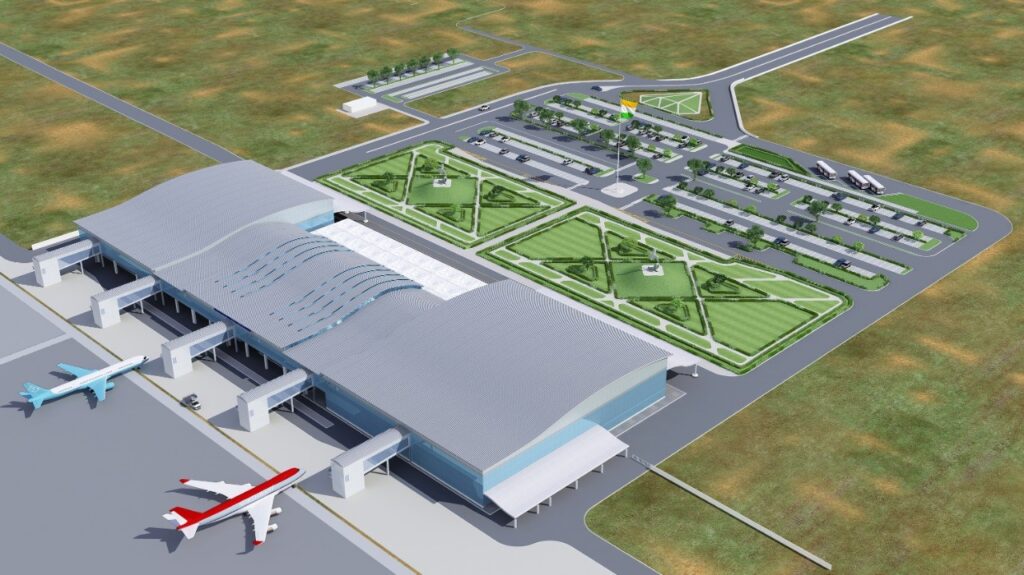Marking the start of commercial operations, a Dornier 228 aircraft operated by Alliance Air landed at Tezu airport in the Lohit district of Arunachal Pradesh on Thursday, June 2.
The 17-seater aircraft, manufactured by Hindustan Aeronautics took around 20 minutes to reach Tezu from Dibrugarh in Assam. The cost of the ticket is INR 1,600.
"We extend our deep gratitude to the government for bringing Tezu on the aviation map of the country, which will benefit the people immensely during medical emergencies, besides promoting tourism," said Ojimso Tayeng, who along with his wife, were the only passengers on the maiden flight.
https://twitter.com/allianceair/status/1532226121240309760
Captain TS Negi and Flying Officer Nishit Tare said that air connectivity is getting a new boost in the Northeast and the economy of the state would witness significant growth.
"Tezu and adjoining districts have tremendous tourism potentials, which will receive a major boost with air connectivity," Captain TS Negi said. The flight service would be available three days a week -- Tuesdays, Wednesdays and Thursdays.
ALSO READ - Alliance Air’s made-in-India Dornier 228 makes its first commercial flight
On April 12 this year, Alliance Air's first flight landed at Pasighat in East Siang district where Union Civil Aviation Minister Jyotiraditya M Scindia and Union Law and Justice Minister Kiren Rijiju were received by Chief Minister Pema Khandu.
Alliance Air said it took delivery of the first made-in-India Dornier 228 plane on April 7 to facilitate connectivity within the north-eastern states.
ALSO READ – Alliance Air receives the first made-in-India civilian aircraft – Dornier 228
Alliance Air said it took delivery of the first made-in-India Dornier 228 plane on April 7 to facilitate connectivity within the north-eastern states.
HAL describes Dornier 228 as “a highly versatile multi-purpose light transport aircraft.” It also notes that the aircraft has been developed to meet requirements like utility and commuter transport, third level services and air-taxi operations, coast guard duties and maritime surveillance.
Read next
Virgin Atlantic launches second daily flight from Delhi to London Heathrow
Radhika Bansal
03 Jun 2022
Virgin Atlantic has launched its second daily service from Delhi to London Heathrow that will also offer customers seamless connectivity to a few destinations in the US, such as New York, Boston, Austin, Los Angeles and Atlanta, the airline said on Thursday, June 2.
The airline, in a statement, said it will be offering 1,00,000 additional seats this year with the launch of its second daily Delhi to London Heathrow service.
Virgin Atlantic launches second daily flight from Delhi to London Heathrow
Virgin Atlantic has deployed its 258-seater Boeing B787-9, comprising 31 upper-class seats, 35 premium and the remaining 192 economy delight, classic and light seats, the British carrier said.
"This year is our largest ever flying programme from India and reflects the strong demand for our flights. We will be offering 1,00,000 additional seats this year with the launch of our second daily Delhi to London Heathrow service, and we have strong bookings for the coming months.”Liezl Gericke, Head of Middle East, Africa, and South Asia at Virgin Atlantic.
The additional daily connection from Delhi to London Heathrow offers more choice than ever, benefiting both business and leisure travellers, the airline said.
Virgin Atlantic is one of Britain’s major international airlines, headquartered in Crawley, United Kingdom.
Virgin Atlantic has deployed its 258-seater Boeing B787-9 on this route.
Virgin Atlantic operates a network of international services to North America, the Caribbean, Africa and Asia from its hub at London Heathrow. It is owned by the Virgin Group (51%) and Delta Air Lines (49%).
Apart from Virgin Atlantic, Tata group-owned Air India and Vistara and British Airways offer nonstop service between New Delhi to London Heathrow. Both Air India and Vistara deploy their B787 whereas British Airways deploys B777 on this route.
Images - Wikimedia Commons
Read next
Keeping up with the need for speed, here's what we know about the "Darkstar" featured in Top Gun: Maverick
Prashant-prabhakar
03 Jun 2022

Anybody who has seen the trailer, or the movie by now, will recall Tom Cruise's Capt. Pete Mitchell taking an experimental hypersonic plane dubbed “The Darkstar”, on an unauthorized test run, whizzing past a lonely guard post on the desert floor.
Lockheed Martin
When the footage first surfaced online, it got all the avgeeks racking their brains with many guessing it to be the legendary SR-71 Blackbird which was once dubbed as “the fastest plane ever", to others commenting it could be the hypersonic SR-72-the Blackbird’s rumoured descendant, also dubbed as the "Son of Blackbird".
SR-71 Blackbird | Wikipedia
Reportedly, and as mentioned on the Lockheed Martin website, when the Top Gun: Maverick team was looking to push the envelope and stand true to Maverick’s Need for Speed, Skunk Works with their expertise in developing the fastest known aircraft combined with a passion and energy for defining the future of aerospace, was their first call.
Apparently, the Skunks worked with the film production team to understand their needs and then worked on the design to unveil the concept of "Darkstar" to the world in the film.
The story behind how Top Gun: Maverick’s Darkstar was brought to life
Representative | Lockheed Martin
Lockheed Martin had previously said Skunk Works was directly involved in the creation of "Darkstar"- a fictitious design. According to Skunk Works, the Darkstar isn’t necessarily real, but the capabilities depicted are not necessarily “mere fiction” either.
The official website of Lockheed Martin features three brief video interviews with individuals who helped bring the Darkstar to the big screen.
https://www.youtube.com/watch?v=-OEDYnqN_aE&t=12s
Lockheed Martin
Most of the stuff I work on, I can't talk about. The first thing you draw may not be the right answer. The 10th thing you've drawn may not be the right answer. And so you have to be willing to start overSays Jim who is the conceptual designer
https://www.youtube.com/watch?v=XjtPO1OwEDs
Lockheed Martin
Lucio, a laboratory mechanic converts conceptual drawings into reality while Jason, a radio frequency engineer, oversees the procurement, assembly, and production of parts on the shop floor. Their collaboration was instrumental in developing a functional piece of art for the film- a realistic aircraft model with a working cockpit.
https://www.youtube.com/watch?v=Oj8kb73SVuo&t=3s
Lockheed Martin
As a mechanical engineer, Becky was responsible for building the Darkstar vehicle, including a forebody model with a functional cockpit. Throughout filming, she kept the model structurally sound and worthy of its pilot.
It is interesting to note that the design of Darkstar bears an uncanny resemblance to the unmanned hypersonic SR-72. The cockpit layout zero with forwarding visibility is also something featured in the X-59 Quiet Supersonic Technology Aircraft (QueSST).
Lockheed Martin
With the Skunk Works expertise in developing the fastest known aircraft combined with a passion and energy for defining the future of aerospace, Darkstar’s capabilities could be more than mere fiction. They could be reality. Darkstar may not be real, but its capabilities arethe Darkstar webpage says
Darkstar | Representative | The Drive
SOURCE(s)
COVER: Lockheed Martin
Read next
Lilium's "Phoenix 2" eVTOL aircraft achieves main wing transition in air - a first in aviation
Prashant-prabhakar
03 Jun 2022

Lilium, the eVTOL aircraft developer based in Germany, has announced that its technology demonstrator Phoenix 2 is the first-ever full-size electric jet aircraft to transition from hover to wing-borne flight-in what can be termed a landmark achievement for the company and electric aviation as a whole.
Globenewswire
From a flight physics perspective, completing transition means the airflow going over the flaps attaches and becomes smooth, allowing the lift to be generated by the wing (as in conventional fixed-wing aircraft), rather than by the engines, which happens to be the case during the hovering phase.
Apparently, Phoenix 2 has achieved this milestone across the entire main wing while, most importantly, remaining stable and behaving as predicted by Lilium’s proprietary Flight Dynamics Model.
Representative | eVTOL news
Main wing transition is a huge step forward on our path to launch and it validates our Flight Dynamics Model.Full credit goes to the outstanding Lilium team who worked so hard to get us here, and who remain laser-focused on the rest of the Flight Test CampaignMatthias Meiner, Phoenix Chief Engineer and Lilium Co-Founder of Lilium said
https://www.youtube.com/watch?v=RqCWgkhNdCY
"Transition" as explained by Matthias Meiner | Lilium
eVTOL aircraft need to generate lift in many different ways to operate efficiently across a diverse range and significant distances.
The aircraft features a Ducted Electric Vectored Thrust (DEVT), that uses small ducted fans to gain or maintain altitude in vertical lift and hover configuration. Hence, when in forward flight mode, it would function as a conventional aircraft, saving power and relying on its carefully engineered wings to generate lift instead. Additionally, the DEVT enhances performance by keeping drag at a minimum.
Front view 3D render of the compact engine integration of Lilium’s ducted electric vectored thrust (DEVT) concept | Lilium
The transition between hover mode and forward flight is a key function of the overall operation and this is exactly what Lilium has demonstrated using its Phoenix 2 demonstrator.
According to Lilium, this makes the aircraft, the first-ever full-sized electric jet to transition from hover to wing-borne flight. Furthermore, the company will focus on transitioning the forward canards, as a part of its continued test programs in the upcoming months.
An improved acoustic profile featuring a footprint that is approximately 10-15x smaller compared to an open rotor eVTOL competitor aircraft gives it a lower noise level prediction at a distance of 100m.
Footprint comparison of a competitive open rotor concept vs. the Lilium Jet | Lilium
Lilium’s engineers collaborated with Zenlabs for over two years and concluded that its pouch cell lithium-ion batteries using high-silicon anode and high-nickel cathode offered the best solution for achieving performance, certification and scale production.
SOURCE(s)
COVER: Flyer MAGAZINE
Read next
Surat Airport to get a world-class INR 353 crore makeover; terminal building to be ready by 2022 end
Radhika Bansal
02 Jun 2022

The Centre-run Airports Authority of India (AAI) will be able to complete the extension work on the terminal building of Surat airport by December 31, an official statement said on Wednesday, June 1.
The existing terminal building is 8,474 square metres and it is being extended to have the size of 25,520 square metres, the AAI’s statement noted.
The new state-of-the-art extended terminal building will be able to handle 1200 domestic and 600 international passengers' during peak hours, resulting in an annual capacity of 2.6 million passengers.
Construction is in full swing for the new terminal building at Surat airport. (Image Courtesy - PIB)
With 20 check-in counters, five aerobridges, an in-line baggage handling system, and five-passenger arrival conveyor belts, the terminal building will offer all of the current passenger facilities. A parking lot with a capacity of 475 cars will be included in the new terminal building.
”The interiors of the terminal building will reflect the art and culture of Gujarat,” it noted. More than 58% of the work for the extension of the terminal building is complete and the building will be ready by December 31, it mentioned.
The airport in India's diamond hub, Surat, is all set for a makeover with the Airport Authority of India developing it for INR 353 crore.
Surat Airport to get a world-class INR 353 crore makeover; terminal building to be ready by 2022 End. (Image Courtesy - PIB)
Aside from the terminal building development, work on expanding the apron from five to 18 parking spaces and constructing a parallel taxi track (2905 m X 30 m) is also underway.
The terminal will be a 4-Star GRIHA rated energy-efficient building with sustainability features. The interiors of the terminal building will reflect the art and culture of Gujarat.
Surat Airport caters to a large number of business communities across the country, as it is directly connected to 16 cities across the country. The new world-class terminal building of the airport will enhance the connectivity to this industrial city, giving impetus to the overall growth of the region.
Surat Airport caters to a large number of business communities across the country, as it is directly connected to 16 cities across the country. (Image Courtesy - Wikipedia)
Surat Airport with a total area of 770 acres is the second busiest airport in Gujarat after Ahmedabad in terms of both aircraft movements and passenger traffic. It was awarded customs airport status on 9 June 2018. It is also home to a flying training school.
ALSO READ - Port Blair airport to have a new INR 700 Crore terminal building by October 2022
Last month, the AAI announced that the new terminal building at the Veer Savarkar International Airport in Port Blair, Andaman and Nicobar islands will be opened by October.
ALSO READ - AAI to commission a new terminal building at the Jabalpur airport by March 2023
Recently, The Airports Authority of India (AAI) will commission a new terminal building at the Jabalpur airport in Madhya Pradesh by March 2023.
Read next
Delhi airport introduces 'BAGG TRAX', RFID-enabled tag to track check-in luggage
Radhika Bansal
02 Jun 2022

The Delhi airport has introduced a personalised baggage tag, enabled by radio frequency identification (RFID) technology, which will give passengers real-time information about when and on which belt is their check-in luggage arriving at the terminal, a statement said on Wednesday, June 1.
The Delhi airport is the first Indian airport to introduce this facility, its operator GMR Group-led DIAL claimed in a statement. A passenger can purchase this tag at the Delhi airport, scan the QR code on it and register it on the website bag.hoi.in, the statement mentioned.
Delhi airport introduces 'BAGG TRAX', RFID-enabled tag to track check-in luggage
"Once the tag is registered, all a passenger has to do is to tie the tag or place it into their check-in luggage," it noted. Passengers will start receiving SMS alerts with the details of baggage on their registered mobile number when their baggage arrives at the Delhi Airport.
"They will get the message on their mobile that their luggage is ready to be picked up at the designated baggage belt," it noted.
"The Delhi airport is a pioneer in using the technology to give a world-class experience to the passengers. The introduction of BAGG TRAX is yet another technology-driven initiative of DIAL to give an enhanced passenger experience. Now passengers will not have to wait anxiously until their luggage reaches the delivery area as they will get all information about their baggage. During this time, they can meet their other needs. The facility will also help reduce the crowd near the baggage belts.”Videh Kumar Jaipuriar, CEO, Delhi International Airport Limited (DIAL)
The 'BAGG TRAX' tags will soon be commercially launched for flyers at the Delhi airport. Presently, as part of the pilot project, BAGG TRAX tags are given to select frequent flyers at Terminal 3 only, it said.
Once commercially launched, flyers can buy it in the departure sections of any of the terminals at the Delhi airport, it noted.
The 'BAGG TRAX' tags will soon be commercially launched for flyers at the Delhi airport.
BAGG TRAX will not only help the domestic and international arrival passengers but also those in transit to track their checked-in baggage, it said.
What is RFID Tagging?
Radio Frequency Identification (RFID) is the wireless non-contact use of radio frequency waves to transfer data. RFID systems usually comprise an RFID reader, RFID tags, and antennas.
RFID tagging uses small radio frequency identification devices to track and identify objects. An RFID tagging system includes the tag itself, also known as a transponder; a scanning antenna and receiver, often combined into one reader, also known as an interrogator; and a host system application for data collection, processing and transmission.
Such systems are commonly used to track and manage goods, animals, and humans.
ALSO READ - High-speed baggage handling system installed at Delhi Airport T1
Now passengers will not have to wait anxiously until their luggage reaches the delivery area as they will get all information about their baggage.
RFID can be traced to the early days of the radio and later the invention of radio detection and ranging (RADAR) in 1935 by Sir Robert Watson-Watt. The use of radio waves to detect enemy aircraft dates back to World War II.
RFID as recognized today appeared in the 1940s and 1950s, with applications beyond military use starting in the 1960s. Charles Walton is documented as the first RFID patent holder for his 1973 design of a portable radio.
How Does RFID Work?
Tagging items with RFID tags allows users to automatically and uniquely identify and track inventory and assets. RFID takes auto-ID technology to the next level by allowing tags to be read without a line of sight and, depending on the type of RFID, having a read range between a few centimetres to over 20+ meters.
ALSO READ - Vistara becomes first Indian scheduled operator to implement RFID Equipment and Maintenance Checking – Here’s what we know


Comment